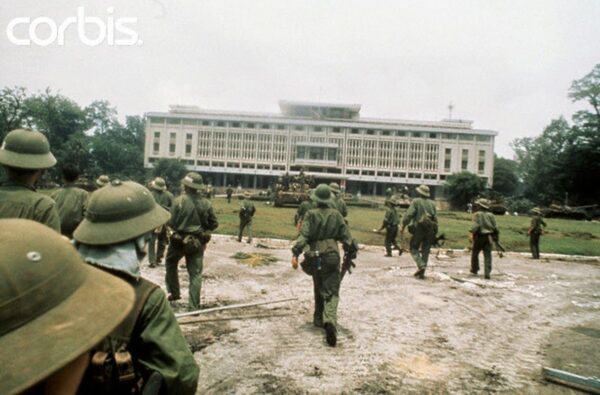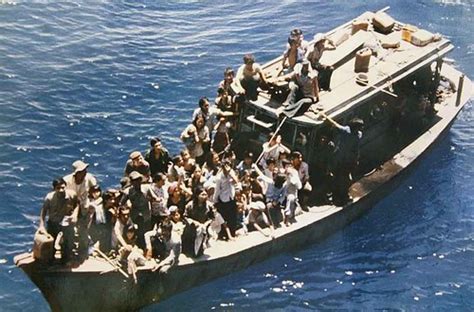By Harold Pease, Ph. D.
Saigon fell 50 years ago this week on April 30, 1975 when U.S. Army Huey helicopters lifted off the roof of the American embassy the last remnants of our presence in South Vietnam ending a 14-year humiliating defeat. North Vietnam, a 3rd world nation, had defeated the greatest power on earth and rubbed this humiliation in America’s face by renaming Saigon, Ho Chi Minh City after the brutal communist victor. This, in a war that respected Senator Strom Thurmond, Armed Services Committee member, insisted ,“We could have been in and out of Vietnam in 4-6 months” (Cong. Record, June 6, 1975, p. S 9905). Thirty million people were lost to communism. Why?

Millions of Vietnamese and 58,281 Americans had died in the futile war to save them from the communist invasion and captivity. More millions died after we left. Subsequent investigations document our having left behind up to 1,205 prisoners of war. We soothed our conscience with movies like Rambo depicting what we should have done but did not.
Those who could not flee the following retribution were sent to reeducations camps for indoctrination. “As many as two million people fled Vietnam on boats. Anywhere from 200,000 to 400,000 died” as they set sail on leaky boats for any country that would pluck them out of the water (“Vietnam 50 Years Later, Americans Are Still Paying for Vietnam War,” New American, April 28, 2025, pp. 6-11). They were called the boat people.
It was not our soldiers fault. The JFK files, recently released, revealed the CIA as a “State within a state” and most responsible for the Kennedy assassination (“John F. Kennedy, Assassination Files Reveals ‘A State Within a State’, ” LibertyUnderFire.org, March 26, 2025). President Kennedy learned quickly that there existed another force to reckon with besides just the legislative and judicial branches—a real shadow government known today as the Deep State, but then as the CIA and/or the Eastern Establishment.
Kennedy opposed the CIA’s Bay Of Pigs invasion of Cuba and wanted America’s withdrawal from the Vietnam War. He had argued “If the American people do not want to use American troops to remove a Communist regime 90 miles away from our coast, how can I ask them to use troops to remove a Communist regime 9,000 miles away?” In 1963 Kennedy signed the National Security Action Memorandum 263 to begin the phaseout in Vietnam which implemented plans to withdraw 1,000 US military personnel by the end of 1963. Other withdrawals would come after the 1964 election and follow. Forty-two days after Kennedy signed this document initiating a withdrawal, he was assassinated” (“Why the Deep State Assassination of John F. Kennedy?” Dec. 6, 2023, LibertyUnderFire.org . He had also promised, “I will splinter the CIA into a thousand pieces and scatter it into the wind,” but they got to him before he got to them.
If the CIA controlled foreign policy before the assassination they controlled it after as well under Lyndon Baines Johnson and throughout the Vietnam War. A lot of money and power is gained during war, the longer the more—especially by the military industrial complex—as President Eisenhower forewarned. Instead of withdrawal, recruitment was amplified from Kennedy’s 16,000 to Johnson’s 184,000 troops.
It is ludicrous that a government would create restrictions on it’s military that would virtually leave them fighting with one hand tied behind their back. And yet that is exactly what our CIA shadow government did. According to U.S. News and World Report, June 30, 1975 citing the then just released formally top secret, “Rules of Engagement for the Vietnam War” our men had to fight under horrendous conditions not imposed from the enemy but from our own State Department (Cong. Record June 6, 1975, pp. S9897-S9904. View in full “Vietnam’s Rules of Engagement,” Freemen Report, Sept. 15, 1975).

What follows are some of those rules. On-ground assaults in urban areas “known to shelter enemy forces generally had to be preceded by loud-speaker warnings and leaflet drops.” Our troops could return fire “only when the enemy was positively identified and in close contact. Sniper and mortar fire were not counted as ‘contact’ unless ‘such fire interferes with the scheme of maneuver or is inflicting casualties or damage to equipment.’” Only flat-trajectory weapons (rifles, machine guns, grenades and recoilless rifles) could be used in civilian-populated areas, which largely exposed our men, and “then only if there was a specific, identifiable target.” Obviously on the ground, U. S superiority in firepower was deliberately not exploited.
Nor was it in the air. Pilots were not allowed to fire where they thought the enemy was hidden—even when fired upon—until they were “sure the strike would be positively oriented against the source.” And in many areas there was the nightmare of getting approval at higher levels even if you spotted the enemy or you were taking ground fire. The chain of command often went through the “province chief, district chief, sector commander and a battalion or higher command” which by the time this was completed, the enemy had disappeared. Enemy airfields were off limits if a “plane with a third nation’s markings was present.” Dams, locks, dikes and targets within 11 1/2 miles of the enemy’s major cities were “banned without prior approval of the Joint Chiefs of Staff” (Ibid.). Good luck on that one.
Perhaps the most detrimental rule imposed on our men dealt with where the blame would lie for mistakes. “The final decision on engagement will be at the discretion of the senior tactical commander present.” Present meant in the field and made commanders there very cautious because it “removed responsibility from the top leadership if anything went wrong…” These rules actually aided the enemy, and it is because of them that this 14-year-long-war lasted so long —from our first sending ‘advisors’ under President John F. Kennedy to the evacuation of Saigon ending the war under President Gerald Ford.
Dr. Harold Pease is an expert on the United States Constitution and a syndicated columnist. Read his weekly columns at www.LibertyUnderFire.org Column #818.
Help preserve our Republic while we still can by sharing this column.
